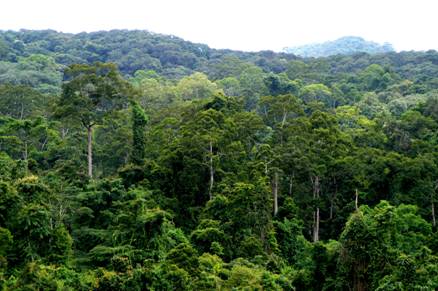China’s tropical rainforests decline 67% in 30 years
China’s tropical rainforests decline 67% in 30 years
mongabay.com
March 3, 2008
|
|
Tropical rainforest cover in southern Yunnan decreased 67 percent in the past 30 years, mostly due to the establishment of rubber plantations, according to a new assessment of tropical forests in southwestern China.
The study, published in the inaugural issue of the open access e-journal Tropical Conservation Science, reviewed species composition in China’s only tropical rainforest.
“This paper summarized advances in biogeography of the unique tropical rain forest of southern Yunnan, southwestern China and highlighted its similarities and differences to typical equatorial rainforests of SE Asia in floristic composition and physiognomy,” said Dr. Hua, author of the paper and a research scientist at Xishuangbanna Tropical Botanical Garden at the Chinese Academy of Sciences in Kunming.
 Tropical seasonal forest of southern Yunnan, China |
“The tropical rainforest in southern Yunnan is a type of tropical Asian rainforest that occurs really at the climatic limits of tropical rainforest due to its high altitude (up to 1000 meters) and at the northern edge of the tropical zone (up to 24-40°N),” he explained. “The tropical seasonal rainforest occurs at altitudinal and latitudinal limits in the northern edge of the tropical SE Asia. At the similar northern latitude of the world, there are mostly deserts or dry lands except the northern edge of SE Asia. This makes the occurrence of the tropical seasonal rainforest unique in the world due to its restricted geographic distribution.”
Hua says that Yunnan’s unique type of rainforest is the product of the moist tropical climate in southern Yunnan which resulted from the uplift of the Himalayas after the late Tertiary period. The forests of southern Yunnan support more than 3600 species of seed plants, 75 percent of which share distribution with other parts of tropical Asia.
“The tropical rainforest differs from lowland rainforests in equatorial areas in having deciduous trees in the canopy layer, fewer megaphanerophytes and epiphytes, but more abundant lianas as well as more plants with microphylls,” he explained. “These differences could be a result of the fact that this forest is influenced by seasonal dryness and the relatively low temperature found in the relatively higher latitude and altitude.”
In decline
Dr. Hua says that despite their biological importance, the forests of southern Yunnan have declined from 10.9 percent cover to 3.6 percent in the past 30 years, due mostly to conversion for rubber plantations. The Dai, an ethnic group closely related to the Thai people of Thailand, have been beneficiaries of the shift from subsistence rice farm to plantations.
“Limiting further expansion of rubber plantations is the only way to conserve the tropical rainforest in southern Yunnan,” said Dr. Hua.
Zhu Hua. 2008. Advances in biogeography of the tropical rain forest in southern Yunnan, southwestern China. Tropical Conservation Science 1(1):34-42